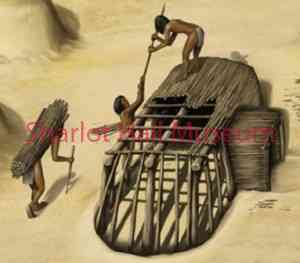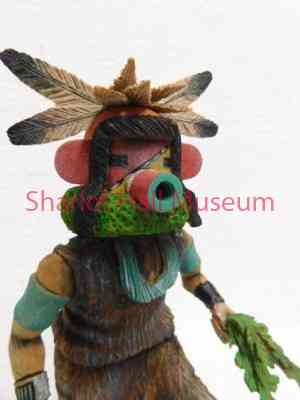By Dave Lewis
Previously, we discussed the eruption that formed Sunset Crater and disrupted the lives of native people living east of Flagstaff.
Scientists conclude the eruption occurred in the summer of 1085 during monsoon season (based on wind patterns driving ash and cinders) and just before the year’s corn crop was fully ripe (based on corn kernels embedded in lava). As fire, ash, cinder and lava destroyed homes and fields, the people placed fresh corn in the molten rock. Almost certainly, this was an offering to appease the unknown force causing the destruction, and there was little more precious natives could offer than corn.
 Modern scientists conclude the ears of corn were deliberately placed near “hornitos,” small vents from which globs of molten rock were lobbed into the air. This material, falling from above, sealed in the corn to form corn rocks. After eruptions ceased, natives gathered these rocks-each about grapefruit size-and carried them to a new settlement.
Modern scientists conclude the ears of corn were deliberately placed near “hornitos,” small vents from which globs of molten rock were lobbed into the air. This material, falling from above, sealed in the corn to form corn rocks. After eruptions ceased, natives gathered these rocks-each about grapefruit size-and carried them to a new settlement.
As they considered what happened, an explanation emerged. The story, conceived over 900 years ago, is that the people angered a katsina who set the earth on fire in retaliation.
A Kana’a katsina and a beautiful maiden fell in love. He wooed her and showered her family with the best foods – even ripe melons when it wasn’t yet planting time. They wed and her family and entire village prospered with ample rain and bountiful crops.
Unfortunately, a few jealous and mean-spirited people in the village tricked the young woman into betraying her husband. When he learned of her unintentional infidelity, he sought to teach them a lesson by causing a fire. Another katsina with the power of the wind blew the fire into a great conflagration uniting the surface fire with the fires deep within the earth, destroying homes, fields and crops.
 The Kana’a katsina continued to provide for his now-estranged wife and her family, but the rest of the village suffered years of drought and famine. Only when the katsinas decided that the people had endured enough hardship and had learned a lesson did they blow out the fire. After enough years passed and most of the mean-spirited people died, the katsinas restored people’s lives to the way they had been before.
The Kana’a katsina continued to provide for his now-estranged wife and her family, but the rest of the village suffered years of drought and famine. Only when the katsinas decided that the people had endured enough hardship and had learned a lesson did they blow out the fire. After enough years passed and most of the mean-spirited people died, the katsinas restored people’s lives to the way they had been before.
The story survives today, as do countless other stories. As the Hopi Cultural Preservation Office explains: “Traditional knowledge is central to Hopi way of life. Embracing the methods of learning (the traditional instructions) is rewarding, because it explains the origins of Hopi clans and the knowledge and skills they bring to benefit Hopi culture as a unified people.”
Traditional knowledge presented this way contains messages on many levels. Listeners learn as their understanding matures and deepens. “The strength of traditional knowledge lies in its ability to convey a deeper truth.”
As with the Kana’a katsina in our story, katsinas and other supernatural beings figure prominently in Hopi life, visiting Hopi villages during part of the year. They have power “to bring rain, exercise control over the weather, help in many everyday activities, and remind the Hopi people on the proper way to live.” They are messengers between mortals and the cloud people.
Small hand-carved katsinas (referred to as “tithu”) are used in storytelling in traditional Hopi teaching. As gifts for young girls and new brides, each doll represents a katsina with its own story and meaning in Hopi life.
Outside Hopi culture, these carved dolls are prized collectors’ items. Contemporary carvers offer a variety of carvings as artistic expressions of Hopi culture.
The Prescott Indian Art Market, scheduled for September 19 - 20, will include half a dozen outstanding katsina carvers as well as other Hopi sculptors, basket-makers and silversmiths.
“Days Past” is a collaborative project of the Sharlot Hall Museum and the Prescott Corral of Westerners International (www.prescottcorral.org). This and other Days Past articles are also available at https://www.sharlot.org/articles/days-past-articles.l. The public is encouraged to submit proposed articles and inquiries to dayspast@sharlothallmuseum.org. Please contact SHM Research Center reference desk at 928-445-3122 Ext. 2, or via email at archivesrequest@sharlothallmuseum.org for information or assistance with photo requests.


